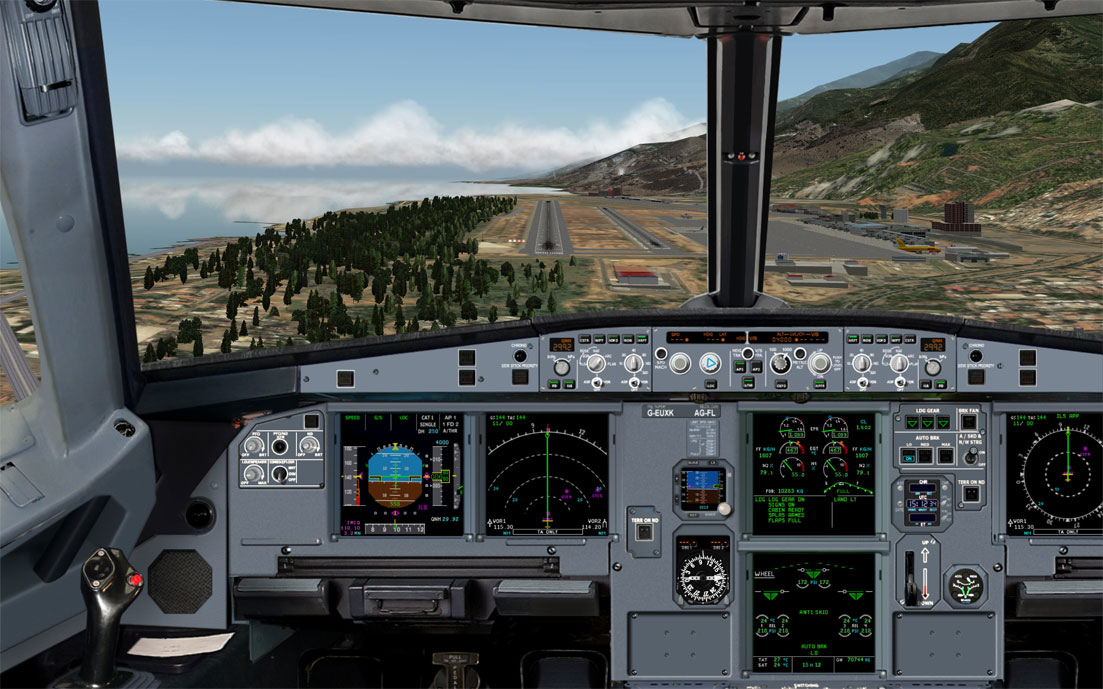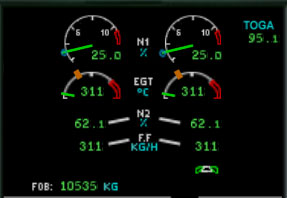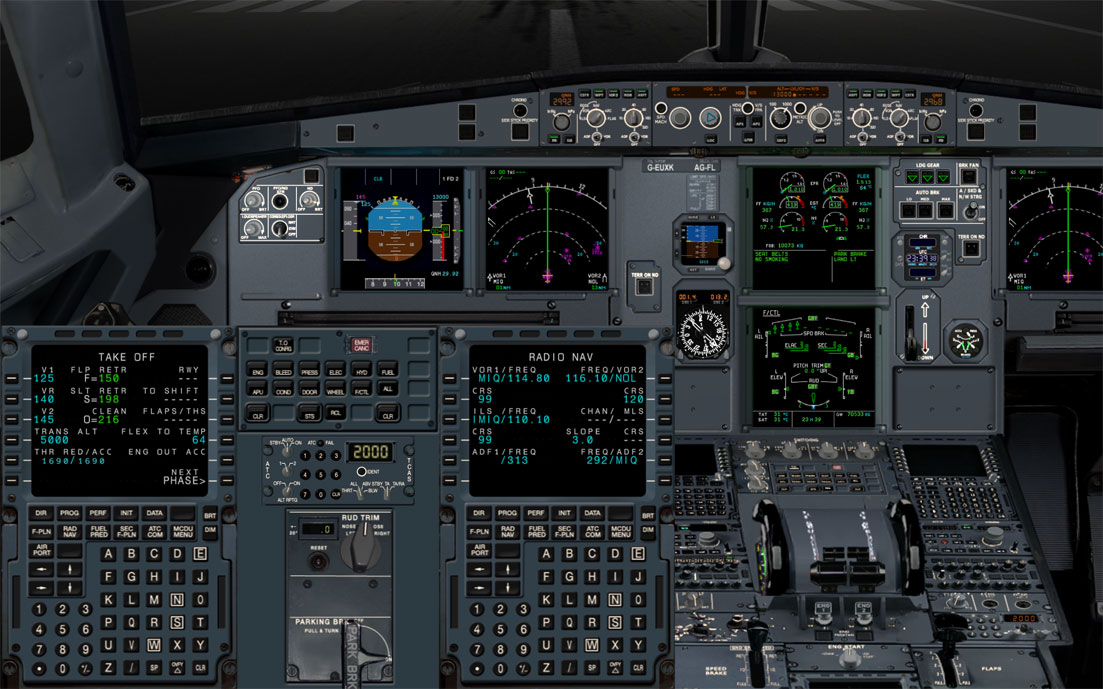| The panel layout has significantly enlarged cockpit windows, enabling excellent view on the runway during approach and taxi, as well as sufficient side view for visual circling approaches. However, the new 3D cockpit will likely be your first choice in any flight situation. | |

| Above is the preferable panel section, as it appears at 1344 x 840 pixel screen resolution. It guarantees a sufficient downlook angle on final approach. The arrow keys serve to scroll left/right and up/down, to show the other sections of the cockpit.
The display units (monitors for PFD, ND, E/WD and SD) are slightly larger than in my other models, with readability significantly improved by using different fonts. However, any resolution, other than the genuine resolution of your monitor, will cause a slight blur effect. Below the full panel widths is shown. Any monitor setting at or above 1680 pixel will display it this way, which looks more like standing in the cockpit door, than sitting in the captain's seat. This option is suitable for procedure training, where it is of advantage to have all Display Units in sight. |
|

The only difference between the panels is the Engine Warning Display. IAE engines are controlled by EPR, CFM engines by N1.
 |
 |
|||||
| For IAE engines | For CFM engines | |||||

|
Above: The OH-panel at night illumination. The magnetic standby compass can be pulled out of it's box above the center window bar, if required.
Below: A pop-up panel displays large scale MCDUs, ECAM control panel, ATC/TCAS panel, pitch trim and parking brake handle. |
|

| All system pages are functional, with countless mode and failure indications. Cockpit lighting comes with dome light, main panel flood lights and center panel flood light, as well as integrated lighting for ON-panel, glareshield panel and main panel + pedestal, each indivudually dimmable. In addition the DUs can be invividually turned on/off and be dimmed. - Go get an impression, watch this video! FULL SCREEN mode is highly recommended. | ||